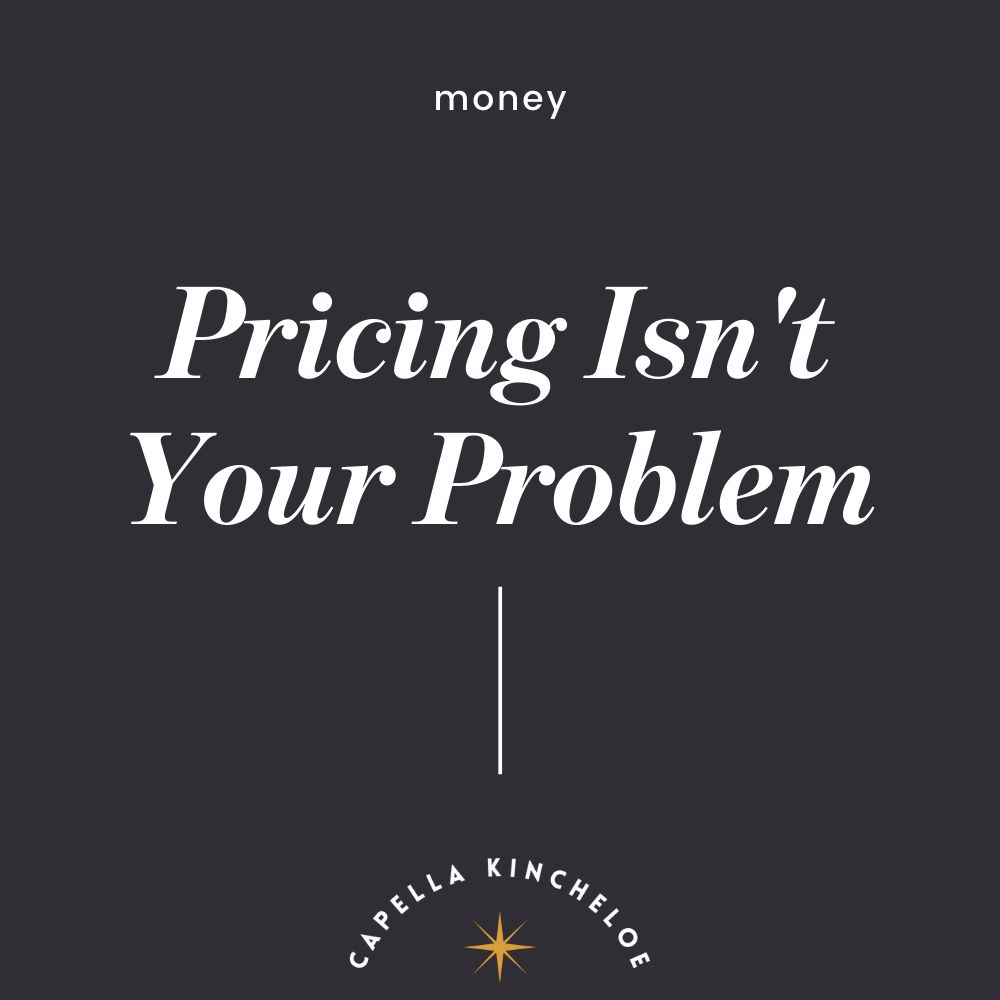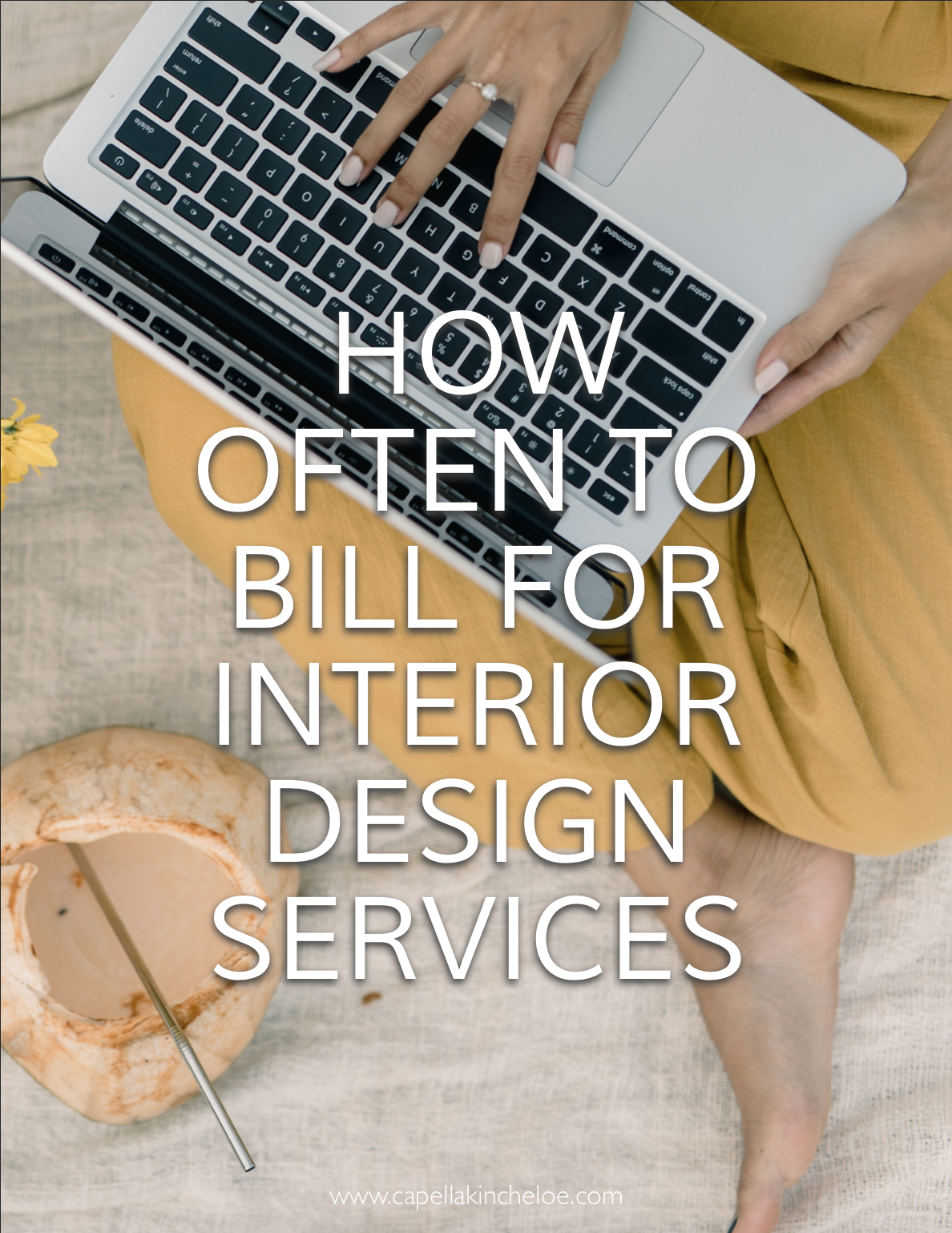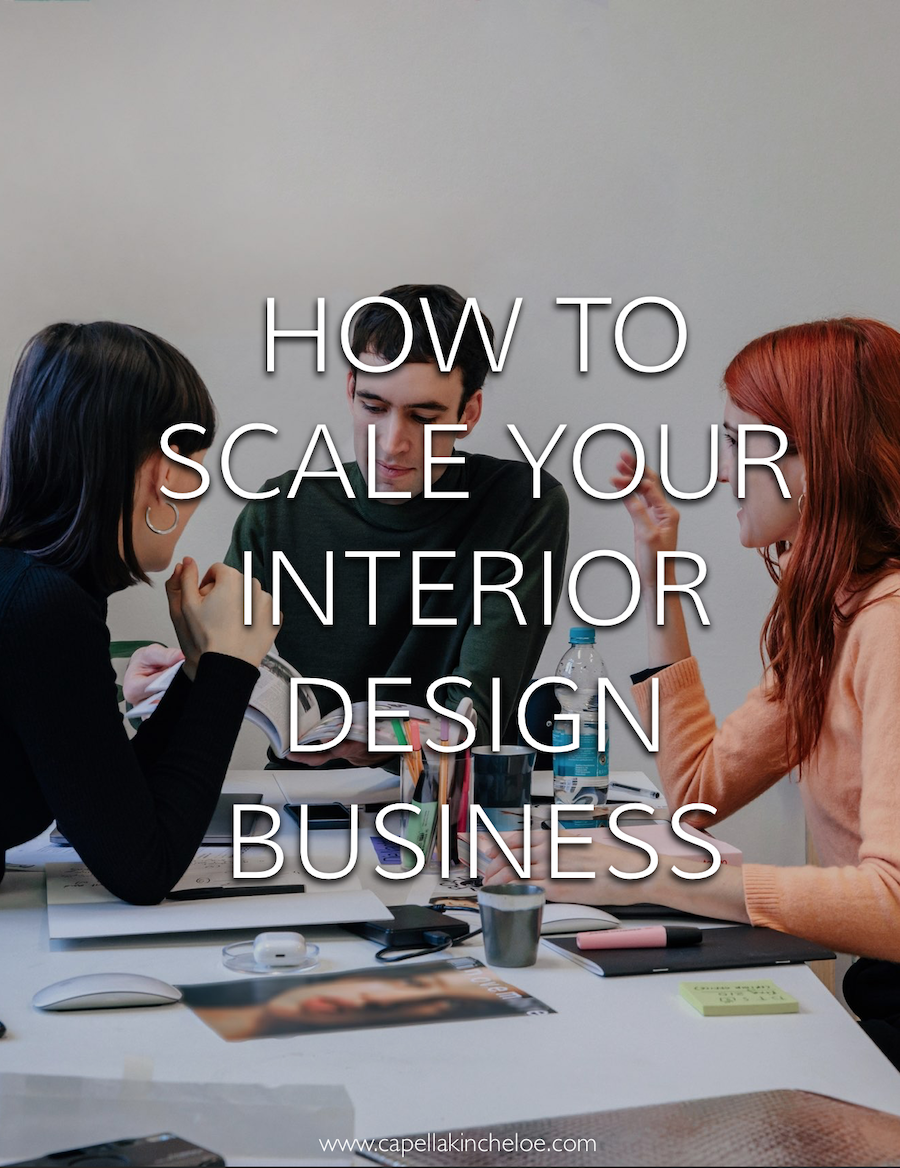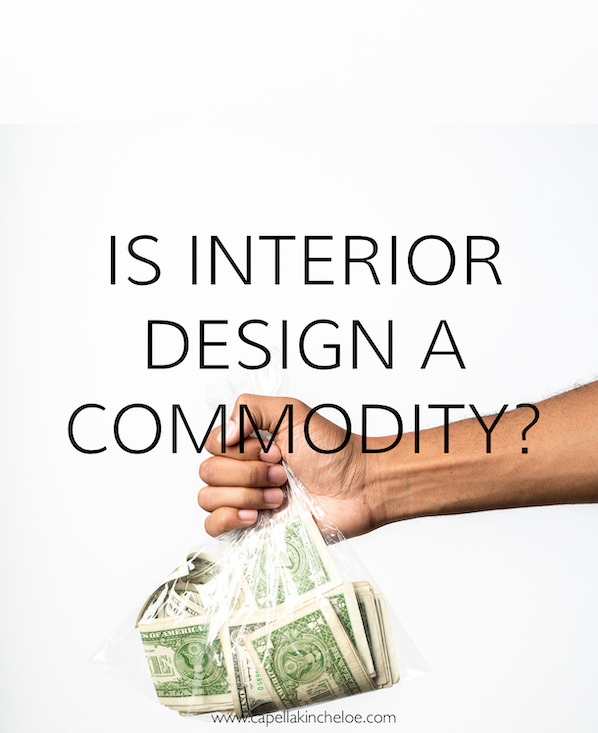One major thing I don’t see enough on interior design websites is pricing. Pricing should be on your website. Pricing must be on your website. You’re probably losing good clients without it. Read Should You Put Pricing on Your Website to know all the reasons that you should include pricing on your website. #capellakincheloe #interiordesignbusiness #interiordesignpricing #interiordesignwebsite #interiordesignceo #businessofdesign
Read MoreDesigners can be obsessive about pricing. As you probably know, I write about things that I see designers struggling with. And pricing is probably the number one issue that designers THINK they have trouble with. But pricing isn't the problem. Trouble usually comes from the issues surrounding pricing like confidence, billing, and time.
Read MoreJust last week, I told you that you can’t make money on small interior design projects. But like most things with running an interior design business it’s not always black and white. So while you may not be able to make money on projects with small budgets, there may be other benefits that you may want to consider.
Read MoreCan you make money on small projects? I’ll share what I see in working with thousands of designers because I know that this is a touchy subject for many designers.
But the short answer for me is ultimately: no. You don’t make money on small interior design jobs. The amount of time that interior design takes does not lend itself well to small projects with small budgets. Plus…
Read MoreRunning a business and creativity are often at odds. The creative side wants to be creative -without restrictions and that could be finding the perfect sofa, exploring every option, scrolling through hundreds of pages of options. But that is not sustainable for business, Clients don’t want to pay you for hundreds of hours of sourcing. This is why lack of time-management is hurting your business.
Read MoreVery often, I will get asked by designers in every range of experience, how do I estimate the price for this project?Clients want some idea of what their project will cost, but without some intentional experience, designers find this estimation very difficult. And we want a quick and easy answer.
Read MoreMany people think making money is dirty or bad (especially women). And even worse, sometimes we’re not even aware that we carry around this belief - it just shows up in how we conduct business and life. If you feel unsure about your pricing or keep spinning your wheels on how to price - there are ways to overcome it.
Read MoreLast week we had five experts in the interior design field share their knowledge on finances. Here’s a recap of what we learned:
Read MoreAll month we’ve been talking about being smart about your business finances. Just because you are a creative you are not excused from the good financial habits that will help you create a profitable interior design business. In fact, not knowing and understanding your numbers is a sure sign that your business won’t be a success.
Read MoreToday I am going to share with you the financial workflow that I use for interior design clients. This is just one way of doing it and many interior designers do it differently - and some probably do it the same. In fact, please share your workflow in the comments!
First, as I mentioned in last week’s post: How Often to Bill for Interior Design Services, I bill my clients every two weeks for time billing (my hourly fees). Reimburseables get billed once a month and sent with the time billing invoice. So that is two invoices per month for clients and my design fees.
Read MoreConsistency in business is important for morale, cash flow, and professionalism. Yet, so many designers aren’t sure how often they should be billing for interior design services. And because of this uncertainty - I see designers struggling with confidence and cash flow.
A while back we had an electrician over to do some work on the house. We didn’t receive the bill that month or the next. Admittedly, I half hoped maybe he forgot about the invoice altogether. But finally, 3 months later we received the invoice. And even though it was a bill that I anticipated I was still a bit frustrated that it took so long.
Read MoreWhile we still have a few more months left in this year, it is the time for you to start thinking about how you can charge more next year.
Read MoreOne of the things that you must deal with when running an interior design company is the cyclical nature of the business. Some times of the year are naturally slower than others. Depending on where you’re located seasons, holidays, school schedules, and daylight savings time (I’m not sure about that last one, but I wish it would go away) can have an effect on the flow of work into your design firm. This means that we all likely have to deal with income ups & downs.
As a smart business owner, you must plan for this. So what can you do when you’re dealing with inconsistencies with your income?
Read MoreI picked up some pretty good habits when I worked for my last company - things that helped immensely in running my own business. One of those things was to get paid first (by the client) before paying the vendor. The goal was to never pay out before being paid. We’re not in the business of loaning anybody money, interior designers are not a bank.
Read MoreToday, I’m going to touch on some accounting principals, markup and margin. These are two terms that you may have to think about when you’re calculating profit and pricing in your business. These are numbers that you should be familiar with and how they play into your business because they can help with your profitability.
Markup and margin are not the same, even if occasionally you may hear them used in the same way.
Read MoreSo, you want to scale your business this year? Or maybe next. Or sometime in the future.
Some people start their interior design business without any idea of where they ultimately want to take their business, they may not even realize they are actually starting a business. They are just working IN their business, head down, trying to get something off the ground. And often, the business takes off because of all their hard work and they are just along for the ride, rather than steering the ship.
So first, you need to steer the ship.
Read MoreSometime within the past few months I came across the headline: “Online Interior Design - How To Hire A High-End Designer For The Fraction Of The Price”. Ugh. Yes, let’s just keep making design cheaper and cheaper.
First, let me say, this is a complicated economic and societal issue that I am certainly not going to solve in a blog post, I’ll probably not even scratch the surface. However, I do want to get you thinking. Thinking about your contribution to the interior design industry.
Read MoreHow much do you want to make this year? Specifically, what do you want your business’s gross profit to be? Do you know how you’re going to get there?
Read MoreAs a business, you deserve to be profitable. Running a business is a challenge and too often we settle for “just getting by”. We shouldn’t settle. We shouldn’t compromise on profitability. We shouldn’t allow ourselves to forget that we’re running a business and the goal of any business is to make money.
Otherwise we’re not running a business, we just have a hobby.
Read MoreHow to handle that first meeting with a client is a source of contention with many designers. How long? When? Where? What information should you get? How much information should you give?
Like running any business, there is not a single best answer. Everyone does it a little different and you can too. In my experience, it is best to get to know the client's needs before meeting with them in person. I have a lengthy client questionnaire that potential clients are required to fill out before I have an in-person meeting with them. Reading their answers gives me a better idea of what they are looking for and what they need. At this point I can also let them know if I don't think I am the right designer for them - all without ever meeting them in person. If we decide to proceed with an in-person meeting/ consultation…
Read More




















